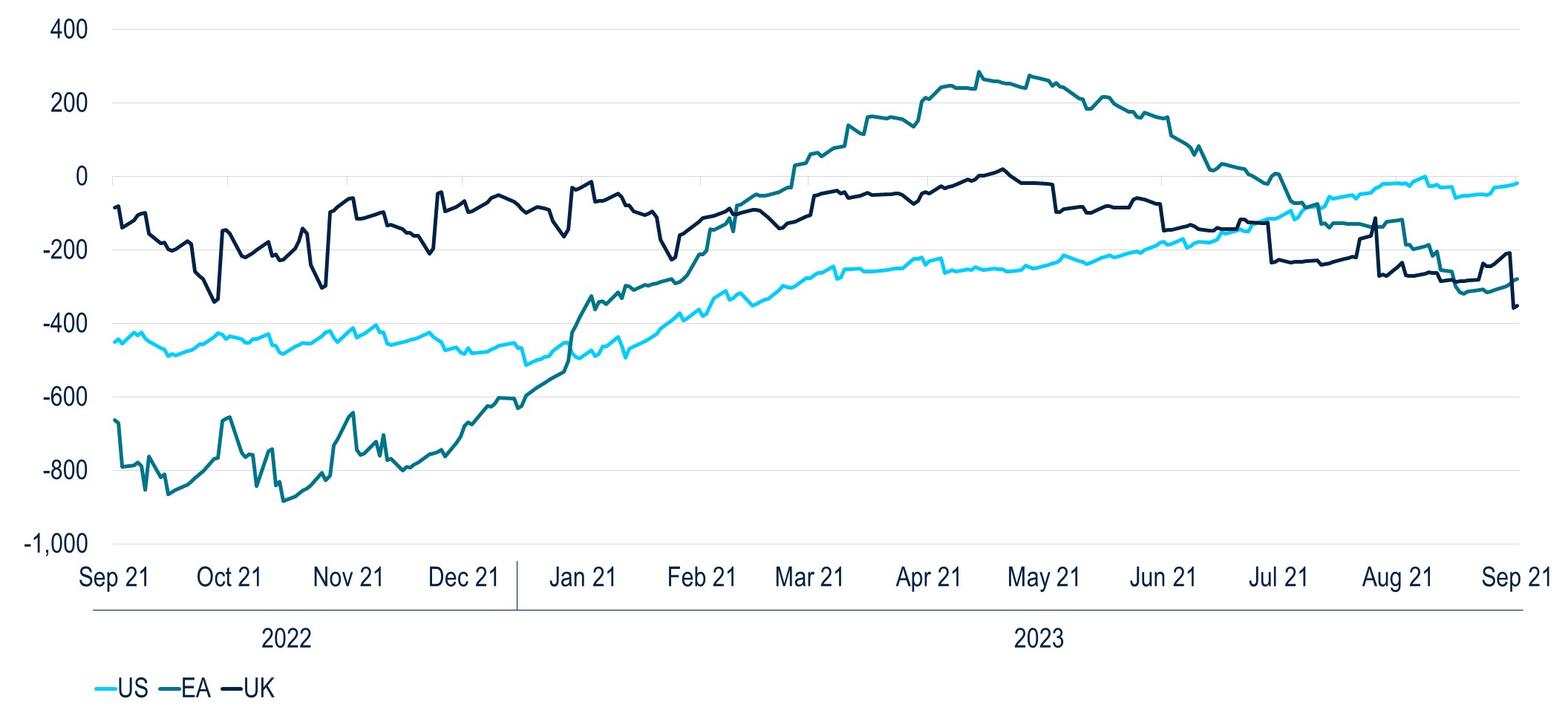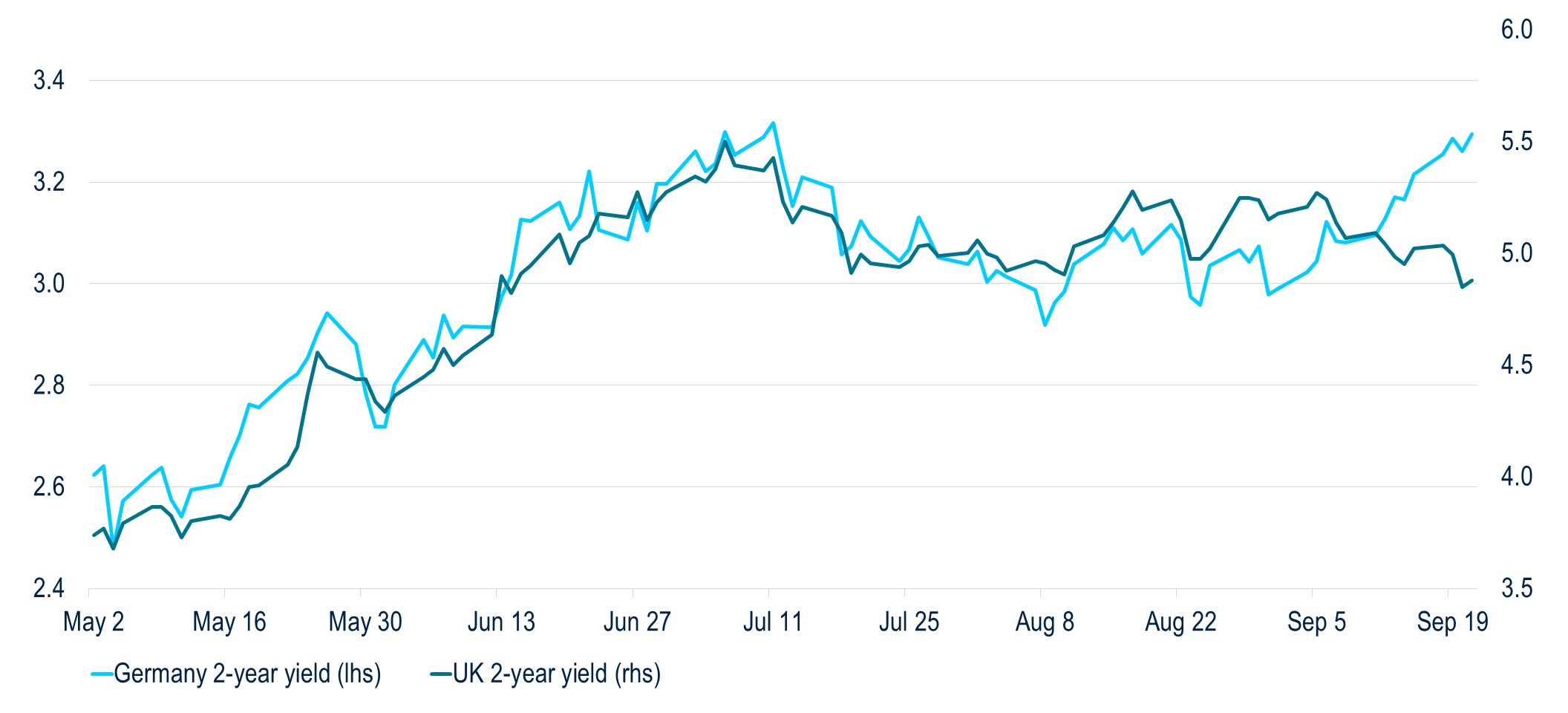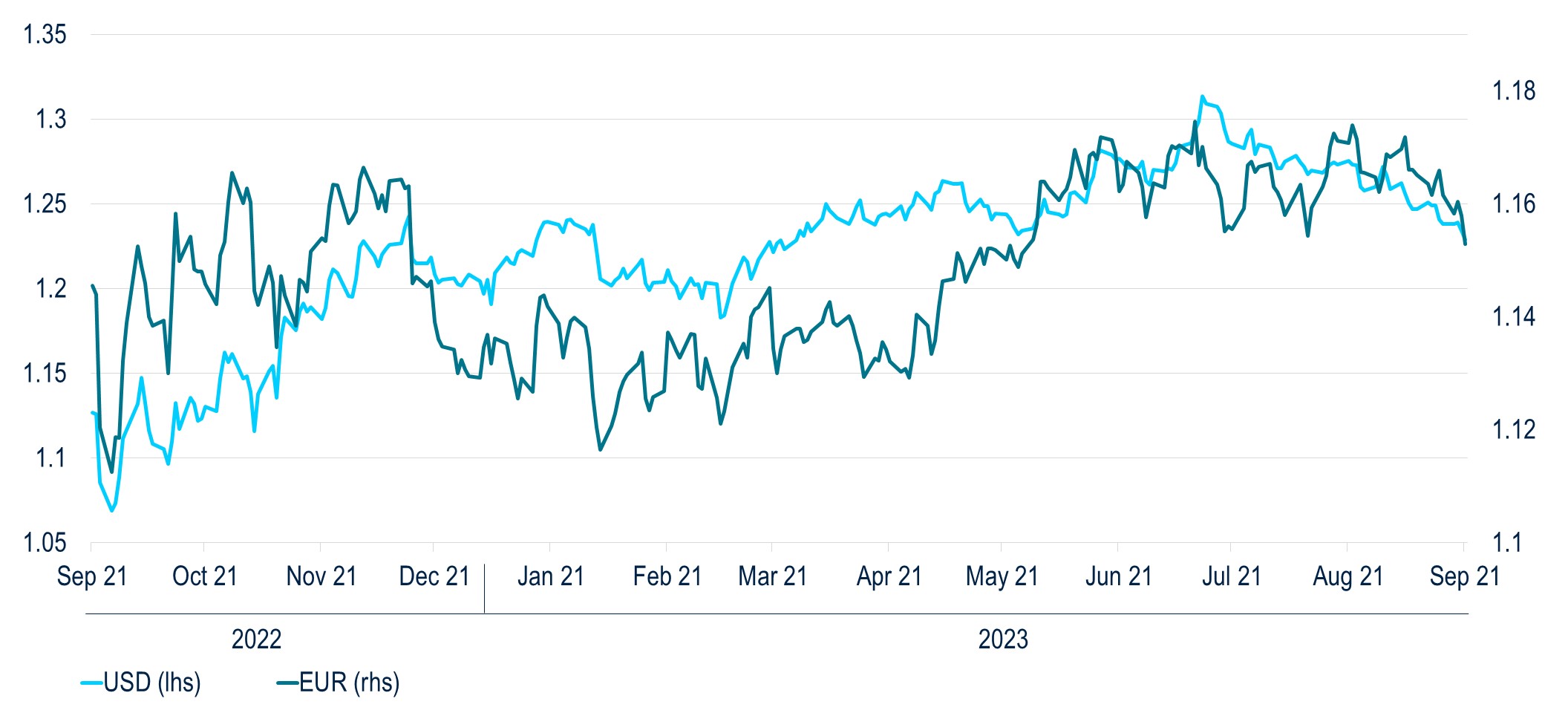The BoE's "Table Mountain" Approach Sees Rates Highest for Longest
The Bank of England (BoE) kept its Bank Rate on hold at 5.25% today. The UK’s economic backdrop is weak, so we believe that the BoE will keep interest rates at this level for the near future. The BoE’s “hold” may protect the UK economy, and it may support prices for government bonds and risk assets such as corporate debt. But if it hurts the pound sterling, today’s decision could raise consumer price inflation, which is sensitive to the exchange rate.
Our Take on the Meeting
Given the elevated inflation backdrop, we’re somewhat surprised that the BoE kept interest rates on hold. This is the BoE’s second dovish signal, after it stepped back from 0.50 percentage point (pp) hikes to a 0.25 pp hike at its previous meeting. Granted, recent data points to a weakening economy and a softening nominal environment. That said, today seemed to us like the most dovish statement and decision that has recently come out of a major central bank. The BoE gave little, if any, forward guidance, nor the conviction that rates might go higher if inflation remains high. Instead, it emphasized the following factors behind its decision:- Inflation is falling faster than expected, but services inflation can be volatile.
- The BoE recalled that its latest projections, conditioned on a market-implied path for Bank Rate to 5.5%, showed inflation in the medium term falling below its target of 2%.
- Pass-through from previous rate hikes is yet to be fully felt in the real economy, which is visibly weakening – and fast.
- Wage growth was “stabilising” on alternative measures to average weekly earnings (AWE), which is key data on wage growth.
- Material weakening in the labor market would likely only happen with a significant delay.
Investor Reaction
Keeping rates on hold was a tricky bet for the BoE. This week’s downside surprise in UK services inflation allowed the BoE to be cautious, especially given weaker growth. At the same time, the inflation fight doesn’t end here. The UK economy continues to face high wage inflation and a low unemployment rate. Today’s BoE hold contrasts with the ECB’s hike last week. Both central banks face challenging growth prospects and high inflation, but the ECB delivered a "dovish hike." To make things even more interesting, the Fed offered a different flavor by delivering a "hawkish pause" on September 20. From investors’ perspective, the BoE’s hold raises three interesting points. First, all three central banks are approaching the end of their aggressive tightening cycles. Second, each of them has been comfortable signaling that policy rates may need to stay “higher for longer” to ensure inflation stays under control. Third, they each face markedly different growth backdrops. In the U.S., economic momentum has been strong until recently, but the opposite has been true in the UK and the euro area, where growth momentum has been weakening since May (Figure 1).Figure 1: Activity has weakened in the UK and the euro area, but it has remained strong in the U.S.

Figure 2: Two-year German Bund yields have stayed close to their cyclical highs but two-year gilt yields in the UK have fallen recently. (%)

Figure 3: Lower UK yields have led to a weaker sterling, relative to the euro and the U.S. dollar.

Sign Up Now for Full Access to Articles and Podcasts!
Unlock full access to our vast content library by registering as an institutional investor .
Create an accountAlready have an account ? Sign in

